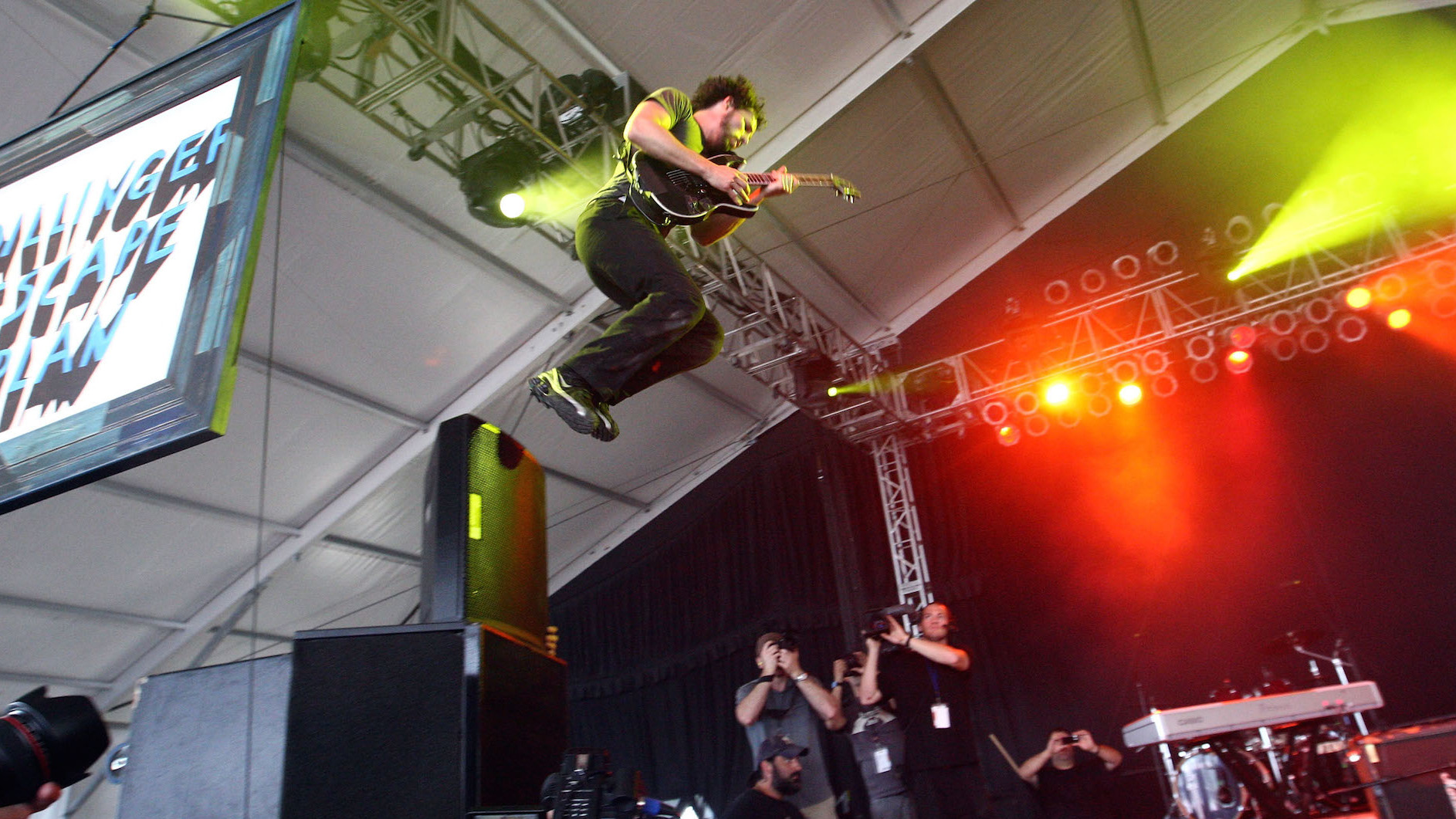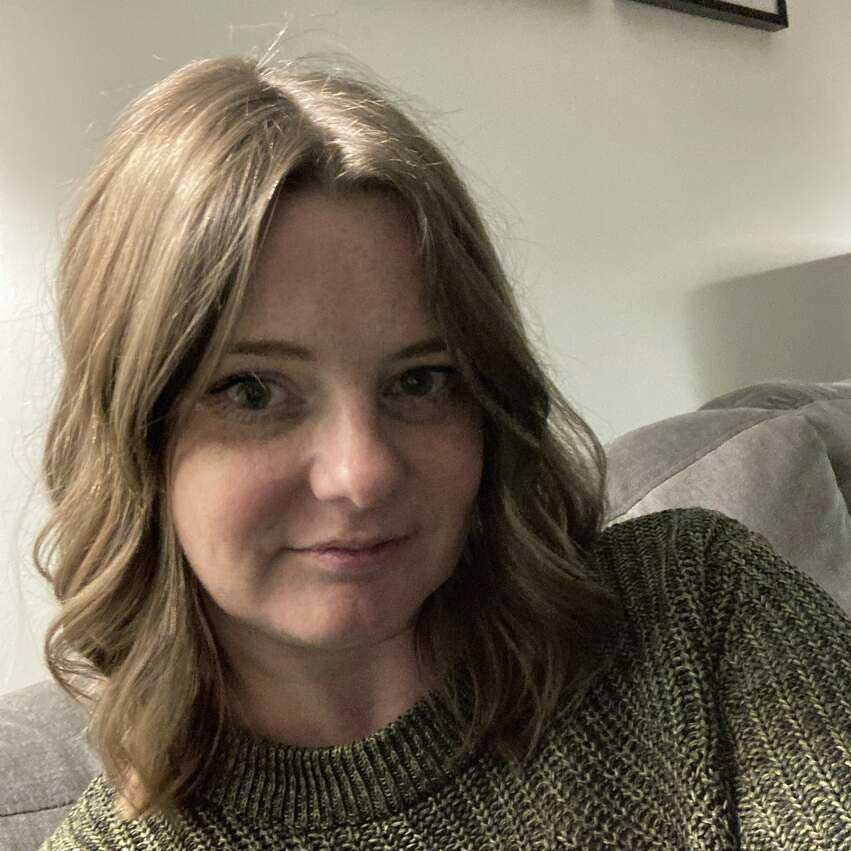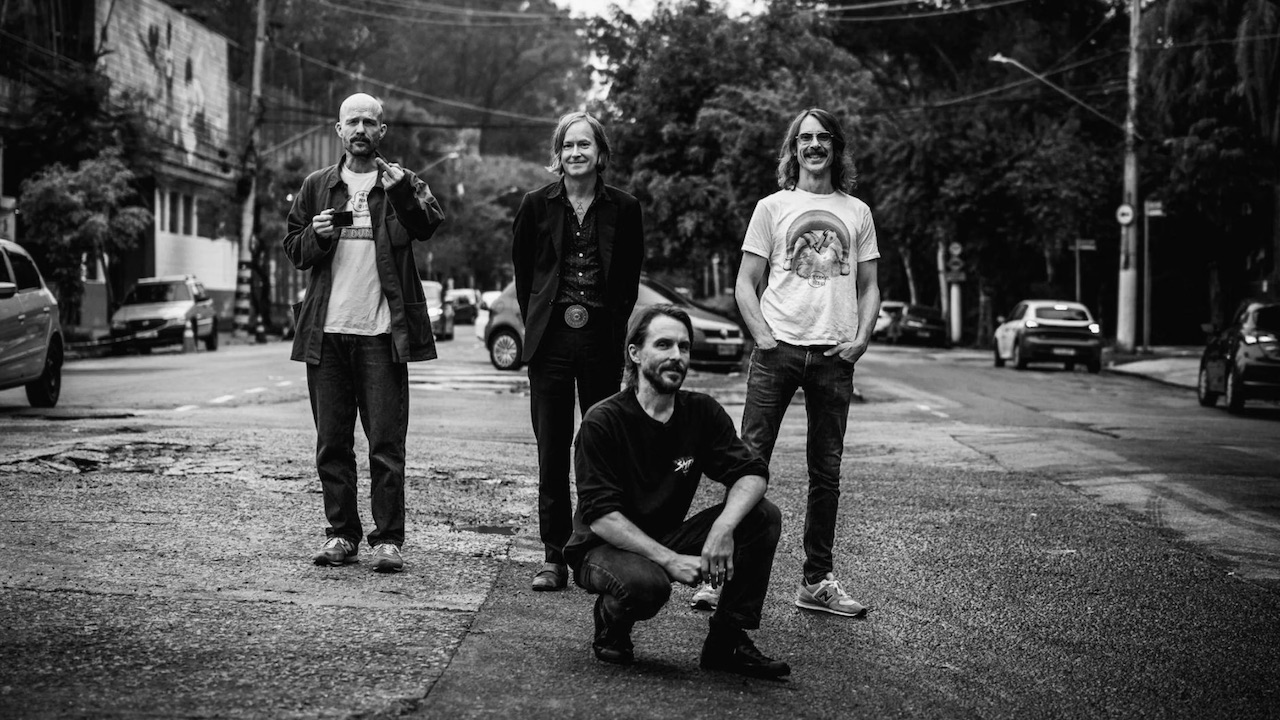The Dillinger Escape Plan: The Story Behind Jim Fear
Guitarist Ben Weinman explains how a childhood encounter with an escaped patient from the local psychiatric hospital inspired one of the stand-out tracks on Calculating Infinity

The debut album from The Dillinger Escape Plan, 1999’s Calculating Infinity, was a mathcore masterclass in aggression and technical experimentation that changed the face of heavy music. Brutal, breakneck and utterly unique, its progressive fury spewed out equal measures of brains and bile with animalistic fervour.
The third track from the record, Jim Fear, was typically uncompromising, a bloodied nose of a song that howled into the void and gave the hardcore scene reason to stop whatever it was doing and make this band their new figureheads. But its inception goes all the way back to guitarist Ben Weinman’s childhood, when a chance encounter with a troubled soul set him on the path to artistic independence…
What was the story behind Jim Fear?
Ben Weinman: “In the earlier days of the band I wrote a lot of the lyrics, I was very hands-on with every aspect of the band even more than I am today. So everything about this band was an opportunity for me to vent things and express myself in a way that I wouldn’t otherwise be able to. Jim Fear was written about the road I went to school on, it’s called Jim Fear Road. That was a place that was really pivotal in me becoming who I am because it was that place where I first started socialising with kids and realising that I was different. I really didn’t fall in line, not only with the curriculum that was being forced on us in school, but also the way that people thought. And I remember very vividly being a really young kid on that street, in the playground, and someone who had escaped from the insane asylum in town [Morris Plains, New Jersey] called Greystone was running around screaming and talking about being in Vietnam. He was running in front of cars, saying, ‘Hit me, I don’t care! I’ve seen things!’. And I just remember staring at this guy, and he ended up going over and talking to me actually. And I remember realising that the world is such a bigger place than that little neighbourhood and that little street. It happened when I was in first grade, so I was little.”
What’s it like looking back on that day?
BW: “I didn’t feel scared. I didn’t feel anything except for realising that literally there was a world out there, and there were things that have happened and that are going on that are bigger than toys and my back yard, and that I wanted to experience it. It definitely had a profound effect on me.”
How much of that event went into the song?
BW: “I don’t think the song literally talks about any of those things, but it definitely is inspired by some of the uglier side of things that I saw. Not only that day, but I didn’t have a good experience at school, so I think it’s more that I sensed an opportunity that I had to express myself and invent things that most people don’t have. And I really appreciate it, and I think about that and it reminds me not to take this opportunity that I’ve had to be in this band for granted.”
- Your track-by-track guide to The Dillinger Escape Plan's new album Dissociation
- Botch could have been bigger than The Dillinger Escape Plan
- The A-Z Guide To Mastodon
- Proof that The Dillinger Escape Plan are the most bonkers live band on Earth
You said you didn’t enjoy school – why was that?
BW: “I was always different from [other] kids. I thought differently. What the teachers called daydreaming, or ‘being out to lunch’ was me just being creative and thinking about all kinds of deep things that weren’t necessarily typical math problems or things that people equated to intelligence. It didn’t help my self esteem very much, for people to be constantly telling me that the way I did things or thought was wrong. I was also the only Jewish kid in my whole town, so nobody there knew what that was, they thought I was some weirdo or that it was some cult or something. It was weird, because later on, being so close to New York and being in the entertainment industry, there’s tons of Jews! Every lawyer and accountant I’ve ever had! But it was definitely a lot of closed-minded people, not only being in a suburban neighbourhood where everyone just fit into the norms of society, but also having those differences from other people.”
Is it true that you and a photographer broke into the old asylum to take photos?
“Yeah, it was crazy because that asylum was a historic thing, and they just knocked it down recently. It was built in the 1800s, and until the Pentagon was built it was the biggest building in the United States. It had a massive amount of tunnels under it. It was one of those places where they did experiments and electric shock therapy, there was so much creepy history in that place, and I’d always wanted to go in there and see it. So we went in there to get this photo-shoot. It was the scariest fuckin’ place I have ever seen in my life. Hands down. There is no movie set from a horror movie that is close to this place, it was creepy as shit. In the basement there were still weird old wheelchairs and beds with straps on them. There were dark tunnels that you could never see to the end. There was still a full church in there with stained glass windows, and files of patients still there on the floor, old charts where you’d see babies that were born with deformities. You couldn’t create a more chilling, weird setting.”
The latest news, features and interviews direct to your inbox, from the global home of alternative music.
Emma has been writing about music for 25 years, and is a regular contributor to Classic Rock, Metal Hammer, Prog and Louder. During that time her words have also appeared in publications including Kerrang!, Melody Maker, Select, The Blues Magazine and many more. She is also a professional pedant and grammar nerd and has worked as a copy editor on everything from film titles through to high-end property magazines. In her spare time, when not at gigs, you’ll find her at her local stables hanging out with a bunch of extremely characterful horses.

